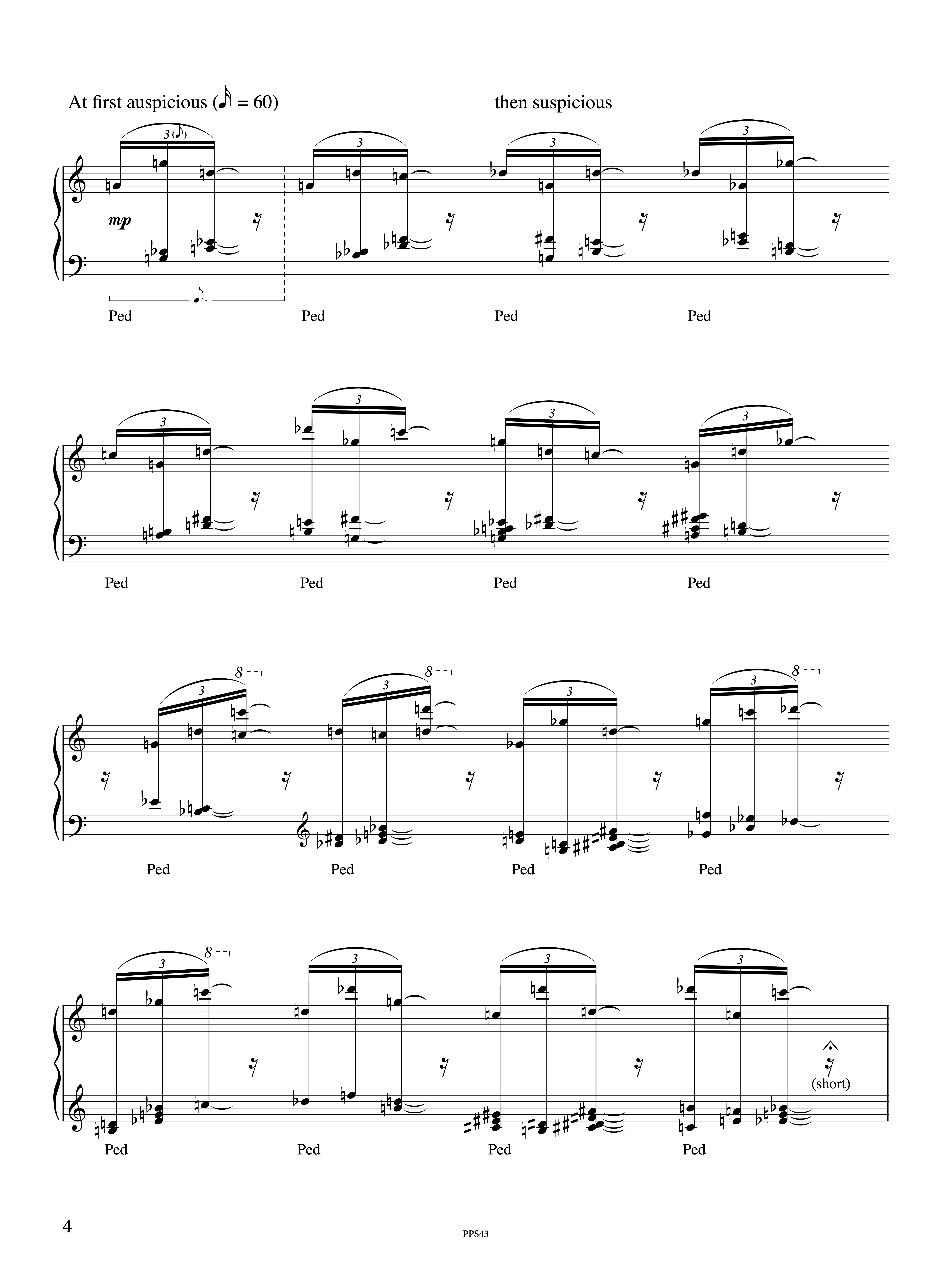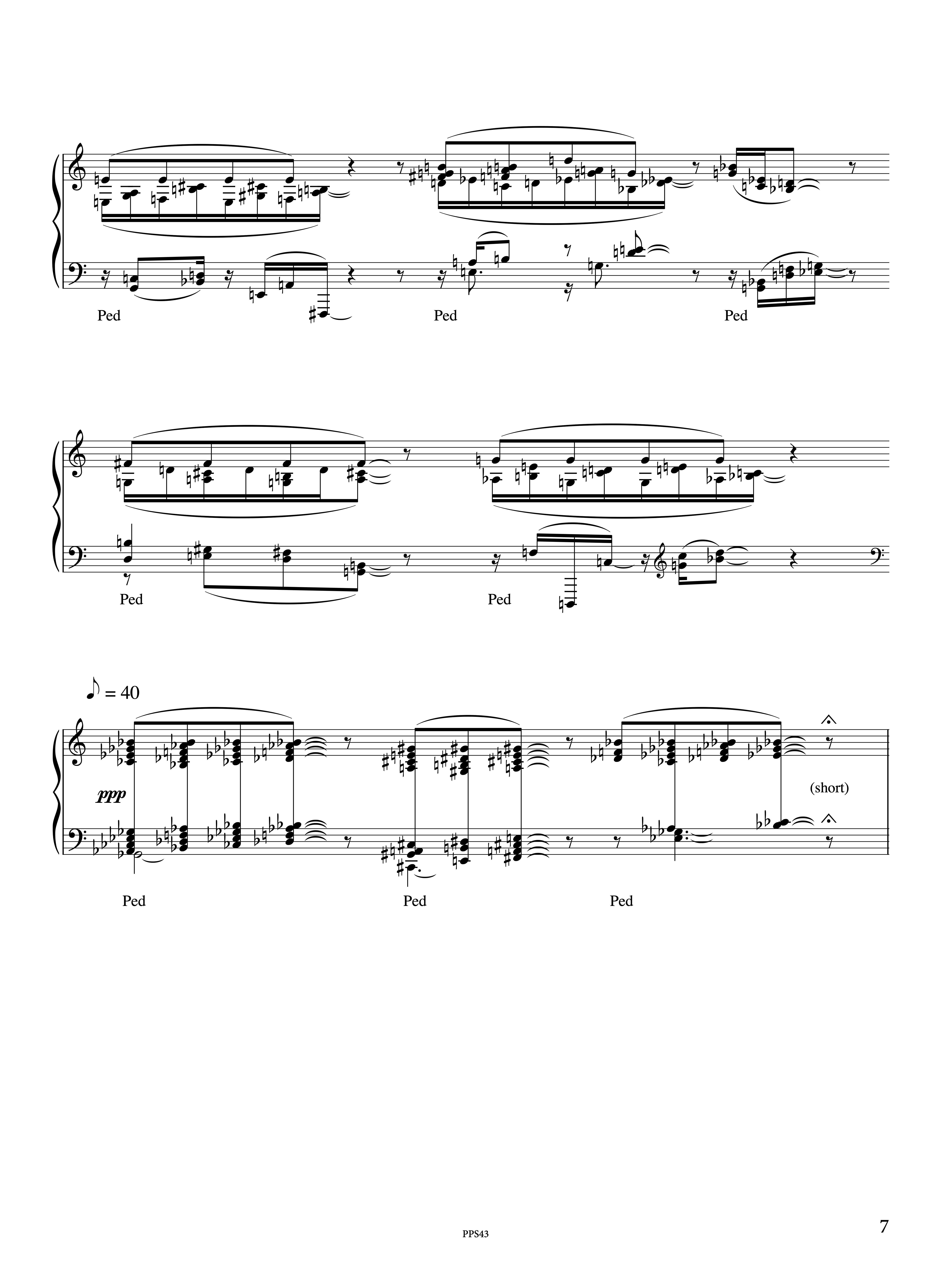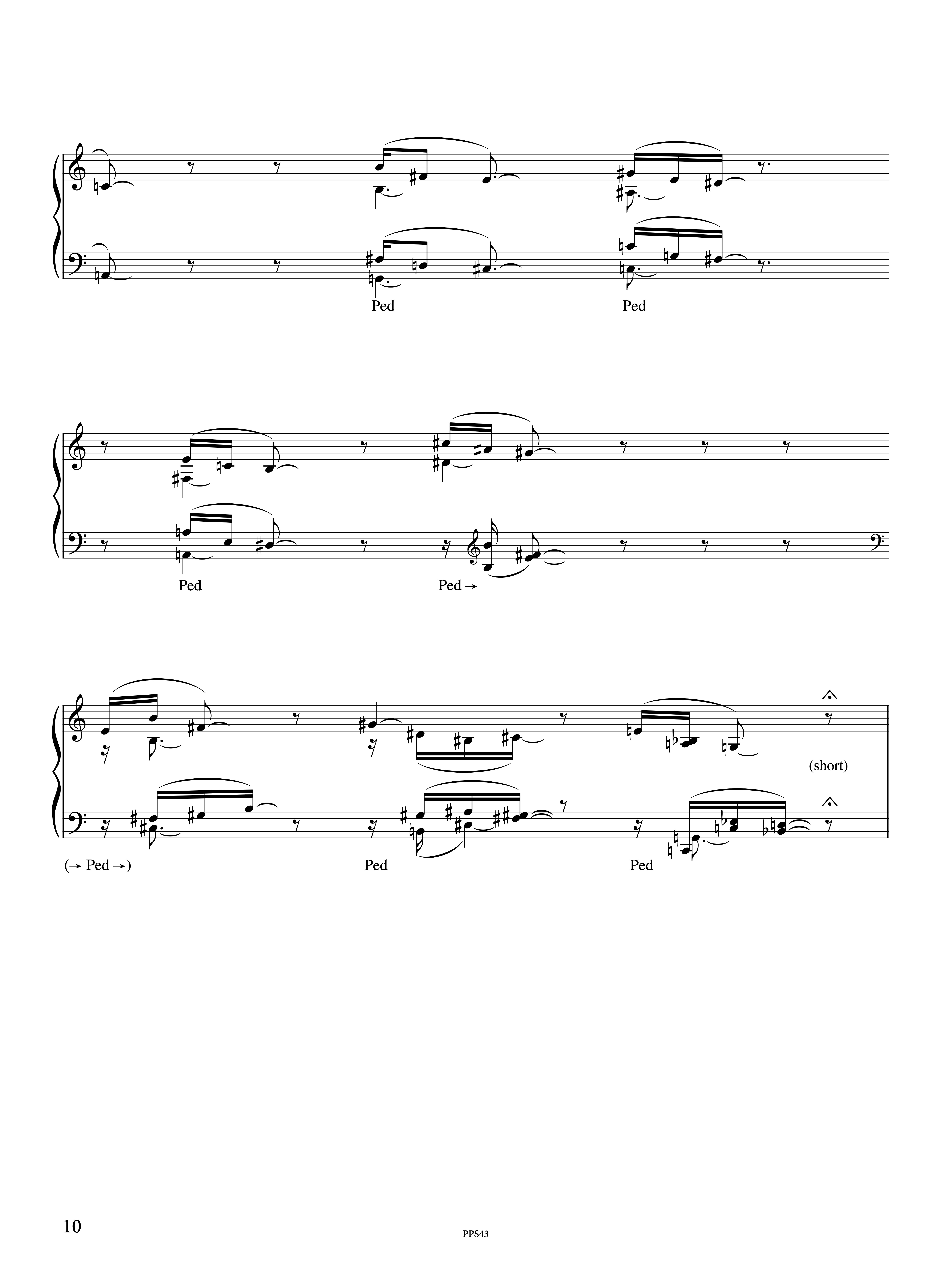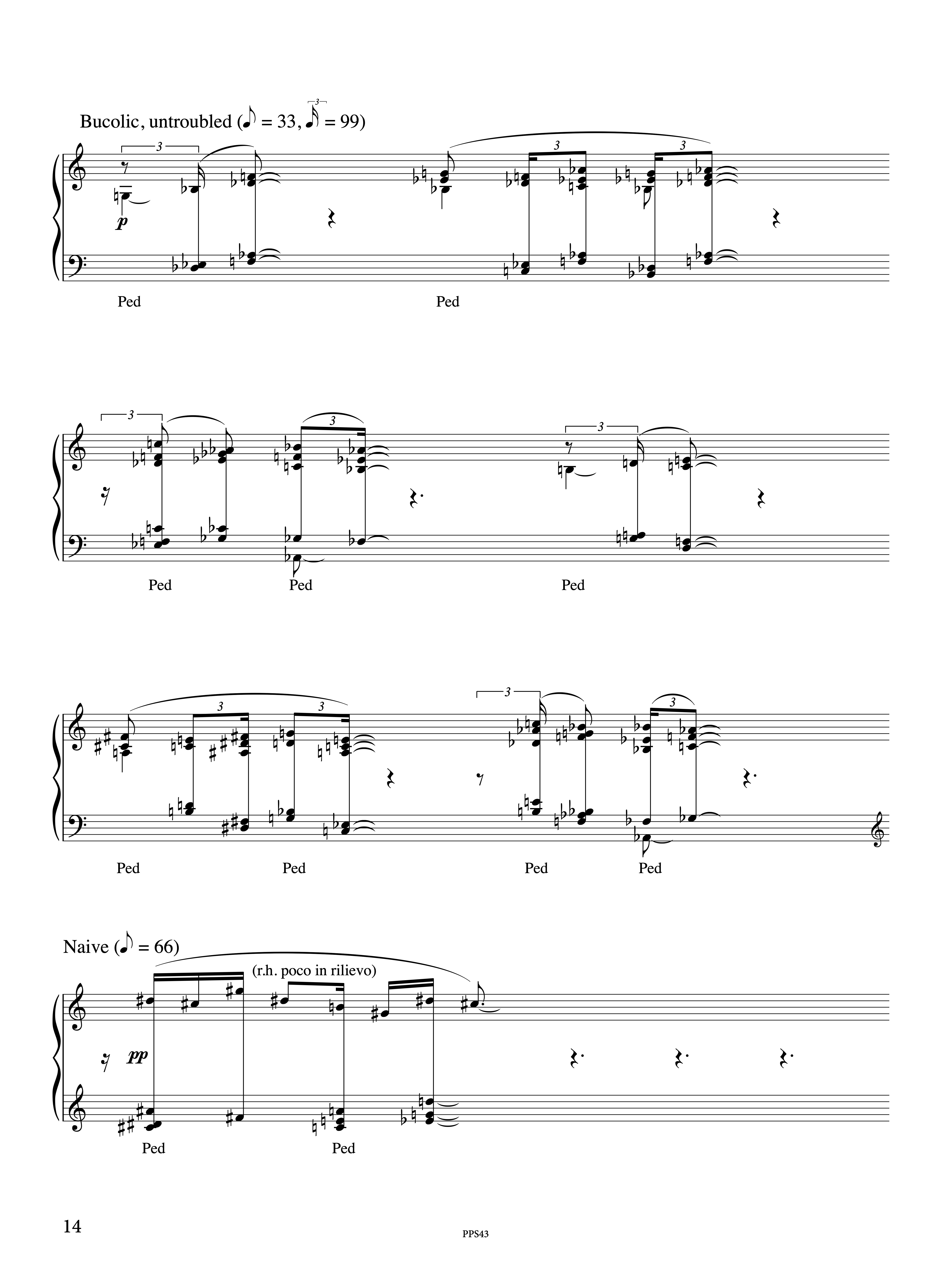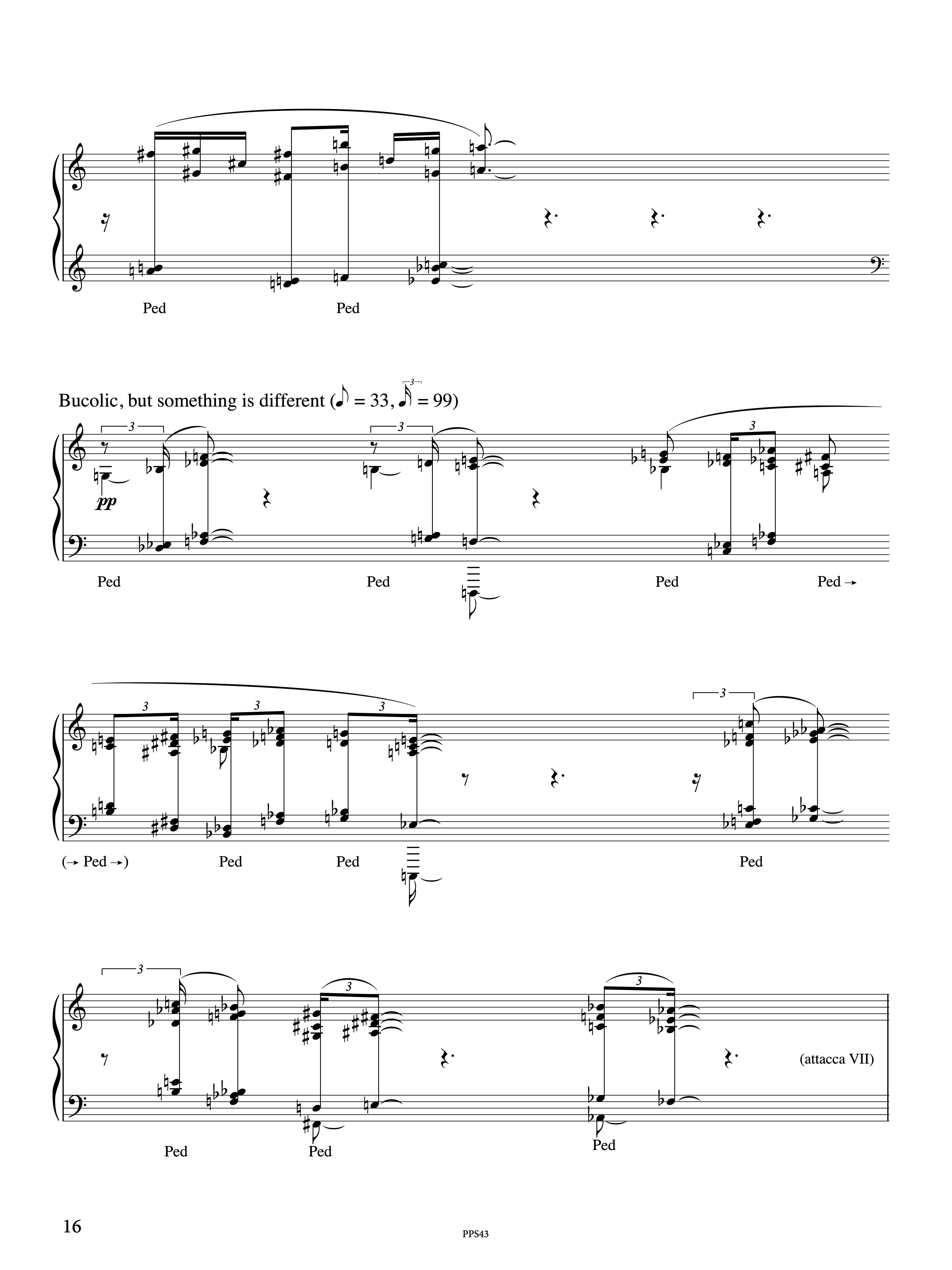︎︎︎Info
Title
Various Occupations
Movements
(I)
(II)
(III)
(IV)
(V)
(VI)
(VII)
(II)
(III)
(IV)
(V)
(VI)
(VII)
fencing (ecrime)
thoughts (réflexions)
immobility (immobilité)
visits (visites)
contemplation (contemplation)
dexterity (dextérité)
swimming (natation)
thoughts (réflexions)
immobility (immobilité)
visits (visites)
contemplation (contemplation)
dexterity (dextérité)
swimming (natation)
Inventory
pno solo
Year
2022
Duration
11’30”
Commission
Francois Mardirossian / Superspectives
Publisher
Recording
Premiere
Jun 17 2023
Superspectives Festival
Maison de Lorette
Lyon (FR)
Francois Mardirossian, piano
Superspectives Festival
Maison de Lorette
Lyon (FR)
Francois Mardirossian, piano
︎︎︎Note
Various Occupations was written in response to a commission from French pianist Francois Mardirossian for inclusion on a double album, featuring—on the first disc—music by Erik Satie, and—on the second disc—music by composers directly or indirectly inspired by Satie and his ‘philophonie.’ Having been an admirer of his work since a very young age, I immediately embraced the opportunity. On January 15, 1913, Erik Satie published a short, now famous, text entitled La Journée du musicien in the journal La Revue Musicale S.I.M. In his characteristically absurd, surrealist style, he declares that an artist must ‘regulate his/her life’ and then outlines his would-be daily routine using exact, irregular times for eating, sleeping, when he feels inspired, and ‘various occupations’: fencing, reflection, immobility, visits, contemplation, dexterity, natation, etc.
It is the latter set of activities that inspired the structure and form of my piece, Various Occupations. The title seemed to me to resonate with the spirit of Satie’s ability to find humor, beauty and mystery in the mundane. The work consists of seven short movements, each establishing and exploring a local routine, cycling through various behavioral properties as though habitually (and therefore unconsciously) seeking comfort in them.
Satie was nothing if not a creature of habit, and for many years following his move to the Parisian suburb Arceuil in 1898, he took daily two-hour walks into town to work at a cabaret theater, to meet friends, and to drink. In his book, Satie Remembered, Robert Orledge relays a theory by Roger Shattuck (in conversations with John Cage), that “the source of Satie’s sense of musical beat—the possibility of variation within repetition, the effect of boredom on the organism—may be this endless walking back and forth across the same landscape day after day . . . the total observation of a very limited and narrow environment.” Satie’s work itself is of course anything but ‘narrow’: perhaps it was because of his strict, obsessive behavioral patterns in life that he was able to dispense with barlines, literally and metaphorically, and push into areas in harmony and form(lessness) deemed too remote by his contemporaries.
This idea struck me as relatable and something I had explored at length in several pieces, perhaps most manifestly in Obsessions for solo piano (2014). Various Occupations is at first glance smooth, almost static, and limited, yet almost no exact repetition can be found in it. Its shapes are steady, angular and plain, occupying each moment in time completely, that is, they are not in service of any macro/global structures that would render them secondary.
Satie, stimulated and sheltered by the lively ambience of bohemian life during the Belle Époque, did not need to fit the stereotype of a symphonic master, because he was busy redrawing the borders of what convention held a composer’s domain to be. He was, as he jokingly announced in another well known article in La Revue Musicale, not a musician, but a ‘phonometrographer,’ making fun of science buffs, distancing himself from the stuffy Paris Conservatory, and wearing this self-declared outsidership as a badge of honor. Contrarian by nature, in rejecting large scale canvases and impressiveness as the only qualifying attributes of good composition, he elevated the mundane, the diaristic, the unpolished, and combined it with a mysticism of his own design. This attitude also served as a guideline in the writing of Various Occupations, whose primary materials were plotless entries in a periodic sketchbook. Investigative symmetrical positioning, superimposition and reconfiguration revealed qualities in them that I had previously missed, and through this process I felt like I had, for a moment and with adolescent excitement, trespassed on Satie’s inner sanctum.
︎︎︎Score Excerpts
